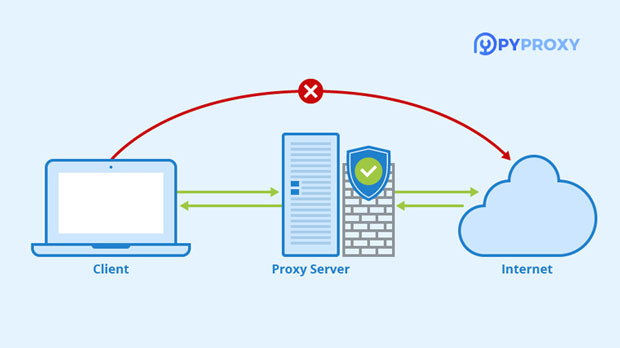When discussing proxy web proxies, a common question arises: Does a proxy support both HTTP and HTTPS protocols? Proxies are intermediaries that sit between users and the internet, helping to manage traffic, enhance security, and increase privacy. The support for both HTTP and HTTPS by a proxy is critical, as the protocols differ in terms of encryption and security. This article will analyze in-depth whether proxy web proxies can handle both protocols effectively, the differences between HTTP and HTTPS, and how proxies work in these contexts. The ability to manage both protocols is essential for businesses, as it ensures that users can browse securely without compromising on speed or reliability. Understanding Proxy Web ProxiesA proxy server functions as an intermediary between a user and the internet. When a user sends a request to access a website, the request is first directed to the proxy server. The server then forwards this request to the target website, retrieves the content, and sends it back to the user. Proxies are primarily used to manage traffic, enhance security, maintain anonymity, and bypass geographical restrictions. By utilizing a proxy, users can conceal their IP addresses, making their browsing activity less traceable.There are two types of proxies commonly discussed: HTTP proxies and HTTPS proxies. The HTTP proxy handles requests made through the HTTP protocol, which is commonly used for basic web browsing. On the other hand, HTTPS proxies handle traffic that uses HTTPS, the secure version of HTTP, where the data transmitted between the client and server is encrypted.Differences Between HTTP and HTTPS ProtocolsBefore delving into whether proxies support both HTTP and HTTPS, it is crucial to understand the differences between these two protocols. 1. HTTP Protocol: - HTTP (HyperText Transfer Protocol) is the foundation of data communication on the World Wide Web. It defines how messages are formatted and transmitted. However, HTTP does not provide any security for the data being transmitted, meaning the information is sent in plaintext. This makes it vulnerable to eavesdropping and interception.2. HTTPS Protocol: - HTTPS (HyperText Transfer Protocol Secure) is the secure version of HTTP. It uses encryption through SSL/TLS (Secure Sockets Layer/Transport Layer Security) to protect the data being transferred. This ensures that the information remains confidential, even if it is intercepted. HTTPS is used for transactions involving sensitive information, such as online banking or e-commerce.How Proxy Web Proxies Support HTTP and HTTPSA proxy server can support both HTTP and HTTPS protocols, but the way it handles the traffic for each differs due to the inherent differences in the protocols. Here’s how proxy web proxies typically work with both:1. Supporting HTTP Protocol: - When a user accesses a website through an HTTP proxy, the proxy server forwards the request to the website as is. Since HTTP traffic is not encrypted, the proxy server can easily read and modify the requests and responses. This enables features like caching, traffic control, and logging.2. Supporting HTTPS Protocol: - HTTPS traffic is encrypted, which complicates things for a proxy server. The proxy cannot directly read or modify the content of the data being transmitted. However, a proxy can still support HTTPS by establishing a secure connection with the client and the target server using a process called “SSL termination” or “TLS termination.” - In this setup, the proxy acts as an intermediary for the encrypted connection. It decrypts the HTTPS traffic from the client, inspects or processes the data if needed, and then re-encrypts it before forwarding it to the target server. This process is seamless to the user, who benefits from the encryption security of HTTPS while the proxy still manages the traffic.Factors Influencing Proxy Support for HTTP and HTTPSSeveral factors influence whether a proxy supports both HTTP and HTTPS effectively. These include the proxy type, configuration, and security measures involved. Let’s explore these aspects in detail:1. Proxy Type: - Forward Proxy: This type of proxy is the most common and works with both HTTP and HTTPS. It can handle requests from clients to any server and can support both protocols. However, its ability to handle HTTPS traffic securely depends on its configuration and whether it supports SSL/TLS termination. - Reverse Proxy: A reverse proxy sits in front of a server, handling requests from clients and directing them to appropriate internal servers. It can support both HTTP and HTTPS, but the handling of HTTPS traffic usually requires SSL/TLS termination to manage encrypted data effectively.2. SSL/TLS Termination: - As mentioned earlier, SSL/TLS termination is crucial for proxies supporting HTTPS. Without SSL termination, the proxy would not be able to decrypt HTTPS traffic and inspect or manage the content. A proxy server that supports SSL/TLS termination can handle encrypted traffic as it decrypts the data at the proxy server before forwarding it to the destination server.3. Configuration and Setup: - For a proxy to support both HTTP and HTTPS effectively, proper configuration is essential. The proxy must be configured to recognize and handle both protocols separately. A common setup involves having the proxy listen on different ports for HTTP (usually port 80) and HTTPS (usually port 443). Some advanced proxies can automatically detect the protocol type and switch accordingly.4. Security Considerations: - While proxies can handle both HTTP and HTTPS traffic, the security of the proxy itself must be taken into account. A proxy that performs SSL termination is exposed to the decrypted data, which could be a potential security risk if not properly secured. Additionally, proxies must ensure that the encrypted data remains protected throughout the entire transmission process.Benefits of Proxy Support for Both HTTP and HTTPSThere are significant benefits for businesses and users when a proxy supports both HTTP and HTTPS protocols. These include:1. Improved Security: - Proxies that support HTTPS allow users to maintain the privacy and security of their data while still benefiting from proxy features like caching, logging, and access control. This is particularly important for businesses handling sensitive customer data or conducting financial transactions.2. Enhanced Privacy and Anonymity: - A proxy helps to mask the user’s IP address and prevents websites from tracking their online activity. When combined with HTTPS support, this ensures that both the user’s identity and their browsing data are kept private.3. Better Performance: - Proxies can improve web performance by caching frequently accessed content. Supporting both HTTP and HTTPS allows the proxy to optimize traffic for both types of requests, ensuring that users experience faster browsing speeds without compromising security.4. Content Filtering and Monitoring: - Proxies that support both protocols can be used for content filtering, blocking access to certain websites, or monitoring online activity. This is useful for organizations that want to enforce internet usage policies or prevent access to malicious sites.ConclusionIn conclusion, proxy web proxies can support both HTTP and HTTPS protocols, although the way they handle the two differs due to the encryption involved in HTTPS. By utilizing SSL/TLS termination, proxies can inspect, process, and forward encrypted HTTPS traffic while maintaining security. This support for both protocols offers significant advantages for users and businesses, such as enhanced privacy, improved security, better performance, and content monitoring capabilities. As digital security concerns continue to grow, it is increasingly essential for businesses to ensure their proxies can handle both HTTP and HTTPS traffic efficiently.
Aug 12, 2025



































































